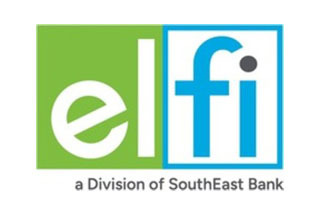Student Loan Interest Rates for December 2025
As the fall semester wraps up, some college students are realizing they'll need additional funds to cover spring tuition bills. If that's you, make sure you're mapping out your expenses and comparing financing options carefully. For student borrowers, it's always best to max out federal student loans first. Although private lenders often offer rates that are lower than federal loans, only borrowers with the strongest credit will qualify. Everyone else will pay higher rates, sometimes even double-digit APRs.
Latest student loan interest rates
Fixed rates | Variable rates | |
|---|---|---|
Private in-school student loans | 2.85% - 17.99% | 3.87% - 17.99% |
Federal student loans | 6.39% - 8.94% | N/A |
Private refinance loans | 3.99% - 10.24% | 4.39% - 10.24% |
Federal vs. private student loans
Before you borrow for college, it’s critical that you understand how federal and private student loans differ. Federal student loans have fixed rates set annually by the government and everyone who borrows gets the same rate (based on the type of loan they’re taking out). Private student loan rates vary by lender and a borrower’s financial profile. In the sections below, you’ll find a breakdown of how each type of loan works — and a more in-depth snapshot of where rates stand today.
Everything you need to know about student loan interest
Whether you're taking out your first loan to pay your tuition bill for the upcoming fall semester or you recently graduated and are getting ready to start repaying, understanding how interest accrues on your loans can help you avoid unpleasant surprises.
Table of contents:
- Federal student loan interest rates
- Private student loans interest rates
- How to get a lower student loan interest rate
- Student loan interest and taxes
- Interest rates: student loans vs. other types of debt
Federal student loan interest rates
When students need to borrow money to pay for college, experts recommend starting with federal student loans since they typically have lower rates and better repayment options than private student loans. Your interest rate depends on the type of loan you qualify for and the year you took out the loan.
Current interest rates on federal student loans
On May 30, the Education Department’s Federal Student Aid office announced the new federal student loan interest rates for the 2025-2026 school year. The following rates apply to all loans disbursed between July 1, 2025 and June 30, 2026.
| Loan Name | Borrower Type | Interest Rates for 2025-2026 | Interest Rates for 2024-2025 |
|---|---|---|---|
Direct Subsidized | Undergraduate students | 6.39% | 6.54% |
Direct Unsubsidized | Undergraduate students | 6.39% | 6.54% |
Direct Unsubsidized | Graduate students | 7.94% | 8.08% |
PLUS Loan | Graduate students and parents of undergraduate students | 8.94% | 9.08% |
How do interest rates work on federal student loans
With federal student loans, the rates are fixed, meaning they stay the same for the duration of your repayment term. The process for setting rates was established by Congress: the rates are based on the high yield of the 10-year Treasury Notes at auction each May, so the rate can change every year for new borrowers.
If you have federal subsidized loans, the government will cover the interest that accrues while you’re in college, during the six months after you graduate or leave school and during any periods of deferment. But with unsubsidized and PLUS loans, you are responsible for all the interest charges, even while you’re in school.
Interest on unsubsidized federal loans is capitalized — or added to the loan principal — when your grace period ends, so it’s common to see your balance grow unless you make large enough payments that cover the accrued interest. Interest capitalization is costly because after the capitalized amount is added to your principal, interest then continues to be charged on the new, larger balance.
Private student loan interest rates
Private student loans can come from banks, credit unions and other financial institutions. Lenders can set their own rates, but they usually base them on a measure like the Secured Overnight Refinancing Rate (SOFR) — a benchmark that influences the rates at which banks lend to one another.
Lenders will charge the SOFR rate plus a margin rate, such as 1%. As the SOFR rate changes, the lender will change its rates too.
Current rates on private student loans
Private student loan rates vary by lender, borrower credit profile and loan terms. These loans can have fixed or variable rates; fixed rates never change, while variable rates can fluctuate over time, depending on market conditions.
Currently, fixed rates for private student loans start around 2.85%. Below are the latest private student loan interest rates from top lenders:
Lender | Fixed Interest Rates* | Variable Interest Rates* |
|---|---|---|
Abe | 2.85% to 15.61% | 3.91% - 16.30% |
Ascent | 2.89% - 15.16% | 4.17% - 14.87% |
Citizens Bank | 3.24% - 14.99% | 4.67% - 14.15% |
College Ave | 2.89% - 17.99% | 4.24% - 17.99% |
Custom Choice | 3.24% - 15.71% | 4.87% - 16.15% |
Earnest | 2.89% -16.74% | 4.99% - 17.10% |
ELFI | 2.99% - 14.22% | 6.75% - 13.97% |
Massachusetts Educational Financing Authority (MEFA) | 3.29% - 8.89% | N/A |
Sallie Mae | 2.89% - 17.49% | 4.12% - 16.75% |
SoFi | 3.43% - 15.99% | 4.39% - 15.99% |
Rhode Island Student Loan Authority (RISLA) | 2.99% - 8.49% | N/A |
How do interest rates work on private student loans?
Private loan interest rates can vary significantly between lenders, and your rate is influenced by your credit history, income, desired loan term and the program you are enrolled in for the upcoming semester.
With private student loans, payments are usually required while you’re in school, though you may be able to pay a reduced amount. Interest starts accruing immediately after loan disbursement.
Private lenders will capitalize the interest at different points, but how capitalization is handled varies by lender.
Keep in mind: Private loans can be a riskier form of debt than federal loans since they usually have higher rates and fewer repayment options. Exhaust your other financial aid options before turning to private loans.
Current rates for student loan refinance
When you refinance a student loan, you replace your existing student loan (whether it's a federal loan or a private loan) with a new private loan. Therefore, interest rates on refinance loans tend to follow the same trend line as in-school private student loans. But it's common for refinance loans to have both a smaller rate range and a lower maximum interest rate.
Currently, the top refinance companies are offering the following rate ranges:
Lender | Fixed rates* | Variable rates* |
|---|---|---|
Earnest | 4.49% - 10.24% | 5.88% - 10.24% |
ELFI | 4.74% - 8.24% | 4.88% - 8.44% |
Laurel Road | 4.74% - 8.75% | 5.04% - 9.05% |
LendKey | 4.49% - 9.39% | 4.39% - 8.47% |
SoFi | 4.62% - 9.99% | 6.12% - 9.99% |
Rhode Island Student Loan Authority (RISLA) | 3.99% - 8.32% | N/A |
How to get a lower student loan interest rate
With federal loans, there isn’t a way to qualify for a better rate; the current rates apply to all borrowers regardless of their credit or income.
Private loans work differently. Lenders base your rates on your creditworthiness, so you may qualify for a lower rate by following these tips:
- Choose the shortest term possible: Long loan terms, such as those of 10 to 20 years, can be appealing because they give you a lower payment. But to offset their risk, lenders will charge high interest rates on longer loan terms. To get the lowest rate possible, opt for the shortest term you can reasonably afford.
- Boost your credit: A few months before you need to apply for a loan, focus on improving your credit. Check your credit report and dispute any errors — you can view your report for free at AnnualCreditReport.com — make all of your recurring payments on time and minimize new credit inquiries for credit cards or loans.
- Apply with a cosigner: Most college students have limited credit histories and lower incomes, making it difficult to qualify for a loan or secure a competitive rate. If you have a relative or friend with excellent credit, ask them to cosign a loan with you. Adding a cosigner will improve the likelihood of qualifying for a low interest rate.
- Shop around: As we mentioned above, interest rates can vary significantly by lender. Shop around and request rate quotes from several lenders so you can compare your options and find the best deal. To help you get started, we identified the best private student loan lenders.
If you end up with loans with a higher rate, you may be eligible for student loan refinancing later. Refinancing your debt once you’re employed and have established good credit could allow you to qualify for a new loan with a lower rate, so it can help you save money.
Student loan interest and taxes
Student loan interest can be a pain, but there is one benefit: It may help you get a larger tax refund.
Both federal and private student loans are eligible for the student loan interest tax deduction. With this tax break, you can deduct either $2,500 of interest or the actual amount of interest you paid over one year, whichever is less. This deduction can lower your taxable income, which can lower your tax bill or help you qualify for a larger tax refund.
As of 2024, to qualify for the full deduction, your modified adjusted gross income (or MAGI) must be less than $80,000 ($165,000 if you’re married filing a joint return). You may qualify for a reduced deduction if your income is between $80,000 and $95,000 ($165,000 and $195,000 if you’re married filing jointly). You aren’t eligible for the deduction at all if your income is over $95,000 ($195,000 for joint filers). The IRS has not published the income thresholds for the 2025 tax year.
How to claim the student loan interest tax deduction
If you paid $600 or more in interest, your lender will send you a Form 1098-E, Student Loan Interest Statement, which you can use to claim the deduction. It’s an above-the-line deduction, so you can qualify for the student loan interest deduction even if you don’t itemize your deductions.
Student loan interest rates FAQs
What is a good interest rate on student loans?
Which federal student loans have the highest rates?
How is student loan interest calculated?
Kat Tretina contributed to a previous version of this story.
More from Money:
23 Ways to Pay Less for College










